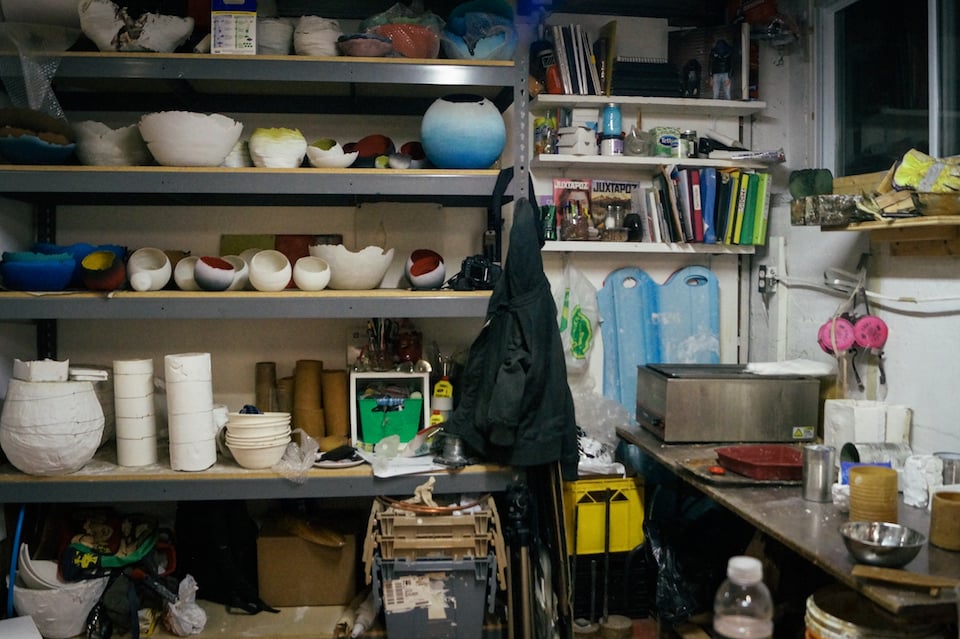[dropcap]G[/dropcap]eneration Y is lauded for its ability to create unique career paths from within an over-saturated market. Given the prevalence of the Internet, the monetization of any skill becomes dependent upon a person’s ability to manipulate their network and online resources. However, despite how conducive digital marketing can be towards success, some traditional values still linger.
Memorability and shock value still maintain their natural attractions. The initial impression a product makes on its audience is paramount. Memorability is key when attempting to reach external communities. Such is the case for Guelph-based glass artist, Shay Salehi. Salehi has gained local and international acclaim for her pâte de verre bowls. The bold and distinctive pigmentation of her work has earned her the Riedel Award in Venice, and the One of a Kind Show Craft Community Award. At 22, Salehi proves that creative expression can be fulfilling, both individually and financially.
About an hour outside of Toronto, the close-knit atmosphere of Guelph is obviously the city’s central charm. Though Shay now misses the GTA, she notes that Guelph has been a good platform for her to debut as a visual artist. She is approached by at least six different people between the station and her studio, and she laughs that in Guelph, “Everybody knows everybody’s business almost immediately — there are no secrets here.” She says the supportive community that exists is crucial to establishing a career. As a result, a career in the arts “is not necessarily as inaccessible as it appears from the outside.”
Shay shares Alleyway Studios with several other artists. Some are practicing glass, some are practicing sculpture, and one is soon to be practicing photography. She leads me past a space laden with sculptures, paintings, and various products created by the studio’s creative residents. In Shay’s own space, the shelves are adorned with several of her pâte de verre bowls — “forms that are either older, or that have not yet been placed in galleries.”
Seated at the work desk that occupies the majority of the first room in her studio space, Shay begins to walk me through her creative process. She explains that her bowls are the result of “fusing,” which involved taking “the glass to a hot enough temperature” so that “the beads will attach to each other.” This is what gives her bowls their distinct opacity and brittle texture. Traditionally, pâte de verre requires a mould and powdered glass, and the pigment is to come from the actual glass. When asked about how she came across this method, she explains that pâte de verre is something that she was taught in school, but what gives her traditional approach a marketable advantage is the spray painted pigment she applies to the glass. The type of glass she uses is “not traditional for pâte de verre, and comes in a powdered form.” She calls the medium “impact beads,” which are typically used on roadways to create a reflective surface for vehicles maneuvering in the dark.
The key ingredient that Salehi integrates into her unconventional process is eccentricity. She says that although she is “not good at flame working due to it being more meticulous and detailed,” she was drawn to glass-working nonetheless. To make her pieces, she uses “a balloon, dip[s] it in wax, pop[s] the balloon, and [is] left with the wax form.” Once she has her wax form, she manipulates the formation to clean it up and form a plaster mould of the shape. Once the wax has been steamed out, the hollow shape that she is left with allows her to “pack glass into the plaster mould, throw it into the kiln, and fuse it together.”
“At first I wanted to learn how to make pipes and bongs but as I got into school, I drifted away from that because there was so much more to the medium,” she says.
According to Salehi, the reality of being a practicing artist is that “if you’re doing it as a job, you have to sell stuff.” In her experience, “People just wanted to buy it, and I saw nothing wrong with that,” which left her with an apartment and a studio paid solely off the income from her bowls. The striking pigment and texture of her bowls leaves the glass to look like a CGI-rendered object. Shay Salehi is an example of how eccentricity will distinguish an artist within the creative community, and as a result, a self-awareness of it arguably becomes the more valuable asset.


